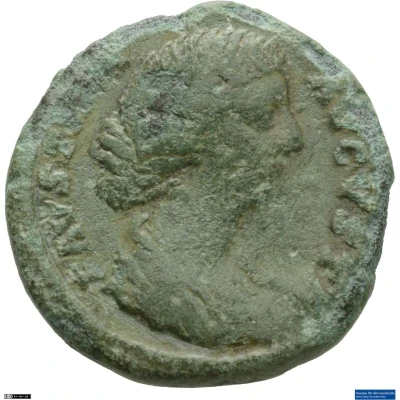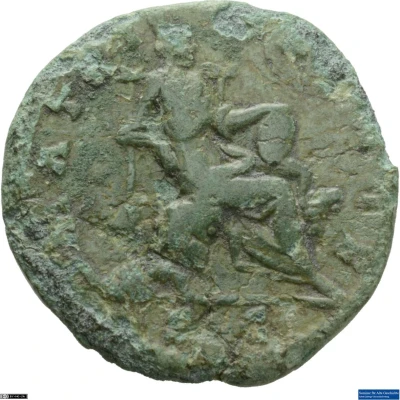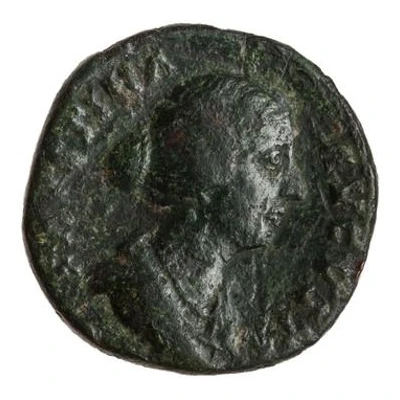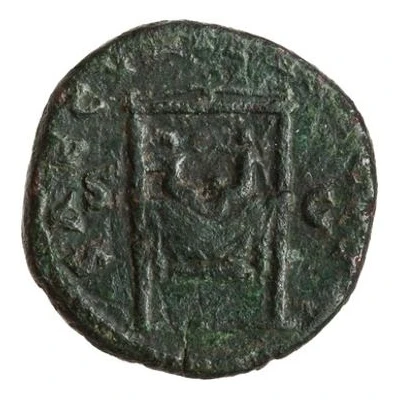


© Münzsammlung des Seminars für Alte Geschichte, Albert-Ludwigs-Universität Freiburg (CC BY-NC-SA 3.0 DE)
As - Faustina the Younger MATRI MAGNAE S C; Cybele
| Bronze | 11.1 g | 25 mm |
| Issuer | Rome › Roman Empire (27 BC - 395 AD) |
|---|---|
| Emperor | Marcus Aurelius (Marcus Aurelius Antoninus) (161-180) |
| Type | Standard circulation coin |
| Years | 161-176 |
| Value | As = 1⁄16 Denarius |
| Currency | Denarius, Reform of Augustus (27 BC – AD 215) |
| Composition | Bronze |
| Weight | 11.1 g |
| Diameter | 25 mm |
| Shape | Round (irregular) |
| Technique | Hammered |
| Demonetized | Yes |
| Updated | 2024-10-06 |
| Numista | N#264380 |
|---|---|
| Rarity index | 94% |
Reverse
Cybele, towered, draped, seated right on throne, holding drum with left hand on left knee, right arm at side: to left and right of throne, lions.
Script: Latin
Lettering: MATRI MAGNAE S C
Translation:
Matri Magnae. Senatus Consultum.
To the great mother. Decree of the senate.
Comment
Mass varies: 10.03–12.51 g;Example of this type:
Münzsammlung des Seminars für Alte Geschichte, Albert-Ludwigs-Universität Freiburg
Source:
Online Coins of the Roman Empire (OCRE)
Interesting fact
One interesting fact about this coin is that it features an image of Cybele, a goddess from ancient Roman mythology, on the reverse side. Cybele was associated with fertility, agriculture, and the protection of cities, and her image was often used on coins during the Roman Empire to symbolize the prosperity and security of the state. The inclusion of Cybele on this coin suggests that the Roman Empire placed great importance on the goddess and her associations with fertility and protection.

